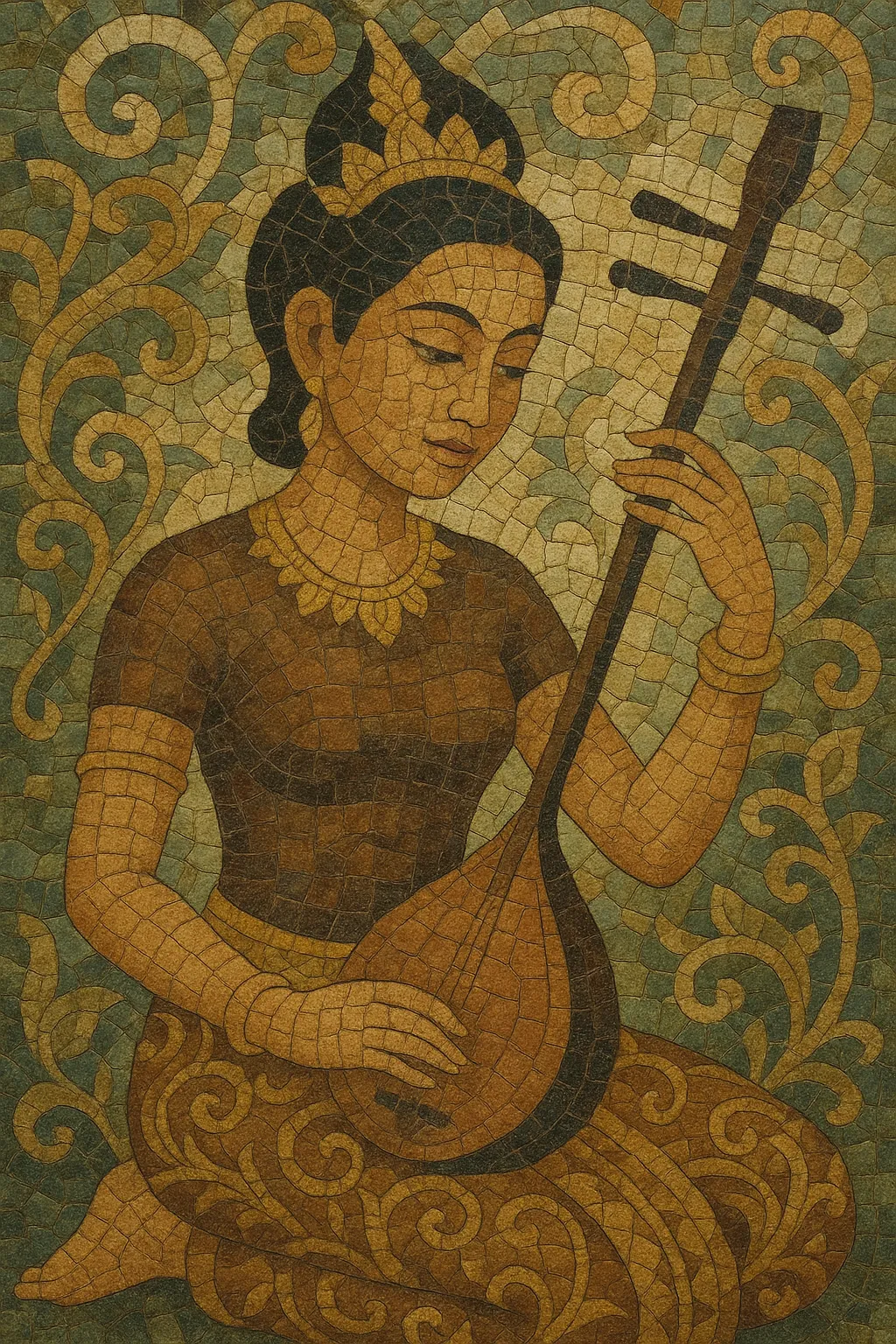Rom kbach is a Cambodian social-dance song style whose name literally means "dance (rom) with classical motifs (kbach)." It features graceful, slow-to-moderate tempos and melodies derived from Khmer classical idioms adapted for popular settings such as weddings and community celebrations.
Compared with the related romvong style, rom kbach tends to be slightly more stately and ornamented, with lyrical, pentatonic-leaning melodies, gentle circular dance steps, and tender, romantic themes. Arrangements often blend traditional Khmer timbres with modern popular instrumentation, yielding a sound that feels both courtly and accessible.
Rom kbach crystallized in post–World War II Cambodia as social dance music adapted from Khmer classical melodic vocabulary and gesture. While its roots draw on older court and folk practices, the codified popular form emerged in the 1950s alongside urban salon and wedding ensembles seeking elegant yet approachable dance repertoire.
During Cambodia’s musical “golden age,” prominent singers and bandleaders brought rom kbach to radio, records, and dance halls. Orchestras and pop bands arranged classical-flavored melodies for modern instruments, keeping tempos unhurried and steps circular and graceful. The repertoire emphasized romance and nostalgia, aligning with the song-and-dance culture of the time.
The Khmer Rouge era devastated Cambodia’s musical life, interrupting transmission and costing many artists’ lives. Surviving practitioners and communities in the diaspora preserved memory of the style through informal gatherings and later recordings.
With cultural rebuilding in the 1990s onward, rom kbach re-entered weddings, TV programs, and stage shows. Contemporary Cambodian pop artists and wedding bands continue to perform new and classic rom kbach songs, often combining keyboards, drum kits, and amplification with traditional percussion and string timbres to maintain its dignified, romantic character.


